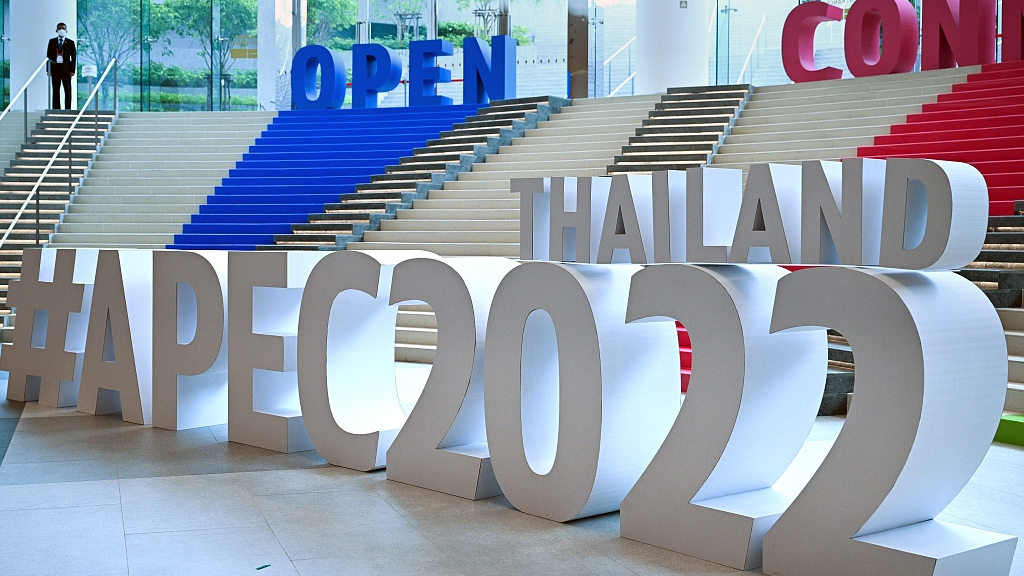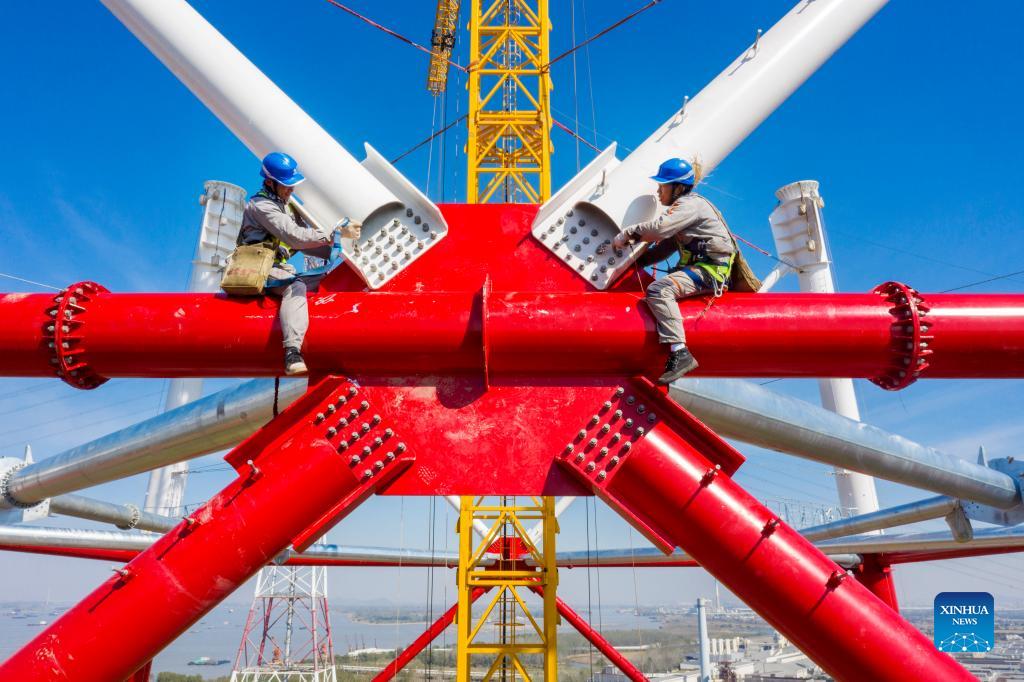
A view shows Queen Sirikit National Convention Center during the Asia-Pacific Economic Cooperation Economic Leaders' Week in Bangkok, Thailand, November 17, 2022. /CFP
A view shows Queen Sirikit National Convention Center during the Asia-Pacific Economic Cooperation Economic Leaders' Week in Bangkok, Thailand, November 17, 2022. /CFP
Editor's note: Wang Shunchao is the assistant director of International Department, China Electric Power Planning and Engineering Institute. He is a senior engineer who has over 10 years of working experience in the electricity sector, specializing in power system planning, electricity sector reform, renewable energy integration, and energy sector modeling. The article reflects the author's views and not necessarily those of CGTN.
Regional geopolitical unrest and the COVID-19 pandemic have caused unprecedented disruptions in the global energy field, creating new uncertainties for the economic recovery in the Asia-Pacific Economic Cooperation (APEC) region, which has long been a vital engine of the world economy, including four of the world's five largest energy users, consuming approximately 60 percent of the world's energy. To maintain the momentum of its development, APEC economies need to build new strategies to a stable energy supply.
The APEC region is also leading the global energy transition race. In the 11th APEC Energy Ministerial Meeting in 2014, APEC economies pledged to double the share of renewable energy in the region by 2030, relative to 2010. The last decade has witnessed the accelerated deployment of clean energy in APEC. According to the APEC Energy Overview 2022, hydro generation in the region has been increasing at a similar rate to total electricity generation, accounting for 14 percent in 2019. The deployment of solar and wind technologies are also increasing rapidly with their generation growing by more than 20 percent per year between 2010 and 2019, indicating that APEC is on course to overshoot its renewable energy 2030 target.
Most major APEC economies, such as China, the U.S., Japan, and South Korea, have pledged to achieve carbon neutrality in the next few decades. The ambitions to reach net zero and the recent disruption of the global energy market have further boosted the momentum of renewable energy development in APEC. In China, 31 gigawatts (GW) of solar power were added in the first half of 2022, up 137 percent from a year ago, according to the China Photovoltaic Industry Association. 80 percent of China's newly added generation capacity was from renewables during the same period, signaling that renewable energy is growing into a backbone source for electricity supply in the country.
One of the conundrums for APEC is that the fossil fuel resources are highly unevenly distributed and many developing economies do not have enough fossil fuel to support their modernizations. Contrary to this, renewable energy is more evenly distributed in APEC, and most of regional economies have enough renewable resources to support the de-carbonization of their economic activities. Therefore, scaling up renewable energy deployment is an integral ingredient for APEC economies to shift away from fossil fuel and achieve higher energy sufficiency.
One of the most challenging parts of renewable energy deployment is tackling its intermittency and variability in the power system. One of the most cost-effective mitigation measures is to expand the balancing region by interconnecting power grids. The advancement of power transmission technologies has provided many technical options for the cross-border interconnection of power grids.
The fast development of renewable energy in China partly benefits from its well-connected power system. The country's west-to-east power transmission program has reached a transmission capacity of 260 GW by the end of 2021, enabling a large amount of clean energy to be transported from western areas to eastern load centers.

Workers rivet screws on a power transmission tower by the Yangtze River in Wuhu, east China's Anhui Province, November 11, 2021. Their work is part of the "Baihetan-Jiangsu" ultra-high-voltage power transmission project, which is an important part of the country's west-to-east power transmission program. /Xinhua
Workers rivet screws on a power transmission tower by the Yangtze River in Wuhu, east China's Anhui Province, November 11, 2021. Their work is part of the "Baihetan-Jiangsu" ultra-high-voltage power transmission project, which is an important part of the country's west-to-east power transmission program. /Xinhua
More cross-border electricity flow will lead to net economic and environmental gains, due to the replacement of expensive and polluting generation in one region with cheaper and cleaner generation in other regions.
In addition, the time zone differences across a large geographical area make the combined load curve more flattened than each individual curve; thus, less system reserve is needed. Driven by these benefits, many electricity connectivity proposals have surfaced in the past few years, indicating growing interest in promoting connectivity in APEC.
However, electricity connectivity in the APEC region still faces multiple challenges. Transmission projects are often capital-intensive, most of which require substantial up-front investments and usually a long construction period. The heterogeneity of power market regulatory frameworks leads different parties to weigh gains and costs differently; economies on the receiving end still have concerns over electricity supply security.
Against this backdrop, it is more important than ever to uphold the principles of "extensive consultation, joint contribution, and shared benefits" for economies in the APEC region. The new reality of the global energy landscape calls for collective efforts of economies in APEC to accelerate the energy transition and energy connectivity.
China has long been a key enabler for the energy development in APEC. With all-around capacities for renewable energy and power transmissions, China is ready to share its knowledge and expertise with other APEC economies, enhancing energy security and accelerating energy transition of APEC.
(If you want to contribute and have specific expertise, please contact us at opinions@cgtn.com. Follow @thouse_opinions on Twitter to discover the latest commentaries in the CGTN Opinion Section.)